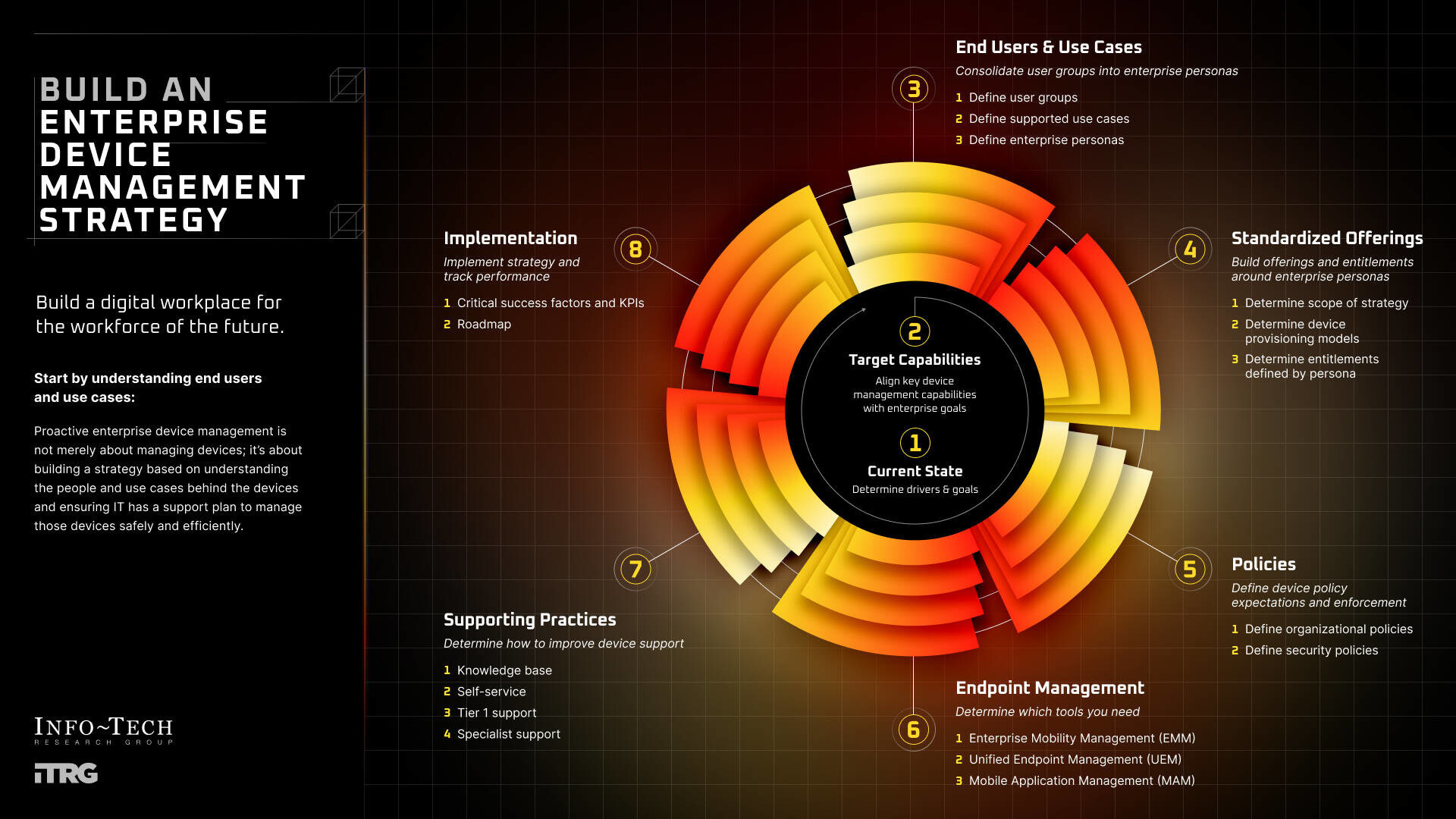Despite businesses facing escalating cybersecurity threats and increasing device complexity brought on by hybrid work models, new insights from global IT research and advisory firm Info-Tech Research Group indicate that many organizations still treat device management as a purely technical issue, even though it has evolved into a strategic business priority.
Remote and hybrid work continue to constitute a significant portion of the U.S. workforce, presenting complex challenges for device management teams and IT leaders, according to its latest findings.
The firm’s research insights reveal that while unified endpoint management (UEM) tools are essential for supporting diverse devices and platforms, their rapid proliferation has led to tool sprawl and heightened endpoint vulnerabilities.
A new blueprint, “Build & Execute an Enterprise Device Management Strategy,” is intended to help IT leaders support broader corporate priorities while addressing the realities of the digital workplace by reducing security risks, optimizing operational efficiency, and enhancing user satisfaction across distributed environments.
Blueprints serve as practical, step-by-step resources with actionable tools to help leaders implement key strategies, solve challenges, and seize opportunities for their organizations.
The resource outlines strategies for IT to secure, standardize, and optimize device ecosystems.
Without a unified device management approach, organizations face increased risks of data breaches, reduced productivity, and growing compliance difficulties.
“An effective enterprise device management strategy is essential for enabling productivity and protecting company resources in hybrid and remote work environments,” said Emily Sugerman, senior research analyst at Info-Tech Research Group. “Devices must be configured to meet user needs while also aligning with organizational security and infrastructure policies. A well-defined strategy helps identify the appropriate management platforms, enforce consistent policies, and safeguard access to sensitive corporate data.”
Three-Step Approach for Effective Device Management:
The three key phases offer best practices to guide IT leaders through planning, implementation, and optimization of enterprise device management.
- Set the Direction: IT leaders and device management teams should begin with an assessment of the current state of device usage, key business drivers, and future goals. This foundational analysis enables the creation of enterprise personas based on employee roles, ensuring device strategies align with both user needs and organizational priorities.
- Define the Offering: With personas in place, infrastructure and operations teams can define standard device offerings that meet both user expectations and operational requirements. This step also outlines the services and policies that support these offerings, including provisioning guidelines, support models, and compliance policies such as bring your own device (BYOD), acceptable use, and remote wipe.
- Build the Roadmap: After the offerings and policies are established, IT planners and project leads can create a clear roadmap to guide implementation. This includes identifying success metrics, setting timelines, assessing risk, and budget planning to ensure a structured rollout and support ongoing improvement.
While providing quality devices is important, it does not guarantee user satisfaction, the firm found. Info-Tech’s CIO Business Vision diagnostic data indicate that device quality has a limited impact on overall IT satisfaction when support and infrastructure fall short of meeting user expectations.
“End users who encounter poor support or unresolved issues will remain dissatisfied with IT regardless of the devices they receive. Organizations must pair device improvements with robust user support to achieve meaningful gains in productivity and user experience,” Sugerman explained.
